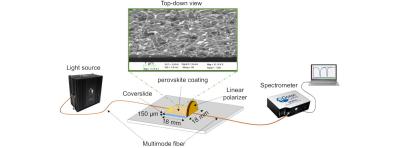KEP Technologies develop perovskites-based radiation detection devices
Halide perovskite single crystals such as MAPbBr3 or CsPbBr3 possess properties that make them particularly interesting for the detection of ionizing radiation. The most important of these are their high stopping power for absorbing gamma rays, their low-dark current and effective-charge-transport capability. They are therefore ideal for efficiently producing charges when gamma rays pass through them, which is a basic function required for their use in a detection device.
KEP Technologies, through its Setsafe brand, is developing prototype-level radiation detection devices that incorporate halide perovskite single crystals and that can trigger an alarm based on various criteria. These devices target applications for defense and public protection against nuclear and radiological risks.






